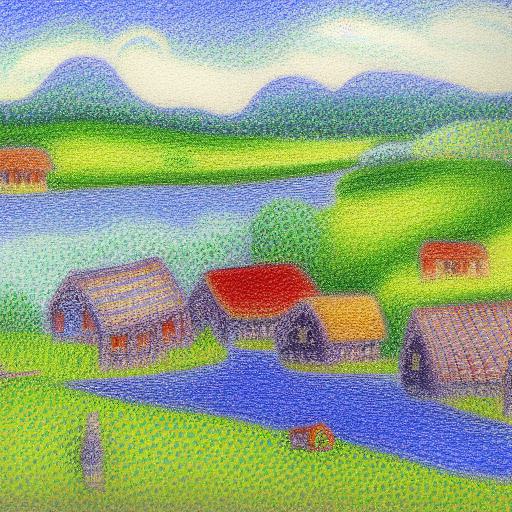Crayon illustration art
Crayon illustration art, also known as crayon art, refers to the technique of using crayons to create illustrations. Crayons are a popular medium for children’s art, but they can also be used to create sophisticated and detailed artwork.
One of the advantages of using crayons for illustration is their versatility. They come in a wide range of colors and can be blended together to create new hues and textures. They can also be applied in various ways, including layering, blending, and cross-hatching, to achieve different effects.
Crayon art is often associated with a playful and whimsical aesthetic, but it can also be used to create realistic and highly-detailed illustrations. For example, artists may use a technique known as “color layering,” where they apply multiple layers of color to create depth and texture.
Digital crayon art
In recent years, digital tools have also been developed to mimic the look and feel of crayon art. Software programs such as Procreate and Adobe Photoshop offer digital crayon brushes, allowing artists to create digital illustrations with the same texture and color range as traditional crayon art.
Crayon art has been used in a variety of contexts, from children’s books and illustrations to fine art pieces. Some notable artists who have used crayons in their work include Henri Matisse and David Hockney.
What is AI-generated art?
The term AI-generated art refers to artwork that is produced using artificial intelligence algorithms, resulting in faster and more efficient image creation. This modern technique offers numerous benefits over traditional art-making methods, such as the ability to experiment with diverse styles and techniques while creating designs that fit specific requirements. AI-generated art also supports diversity and inclusivity within the art world by providing artists from different backgrounds with a platform to express their unique experiences and perspectives.
To incorporate AI-generated art into their projects, designers can easily use online tools like Visual Paradigm Online. Additionally, websites such as Stable Diffusion, Midjourney, and Dalle 2 provide artists with the opportunity to create their own AI-generated art and explore the countless creative possibilities that this technology offers.
How to create this prompt?
Firstly, the prompt specifies that the image is a painting of a river and house village. This gives the AI a clear direction for what type of scene to generate. The mention of a village also indicates that there may be multiple buildings in the image, and the reference to a river suggests that there will be a body of water included in the scene.
Next, the prompt mentions that the image is a color pencil sketch inspired by Ethel Schwabacher. This information is important as it provides a specific style and aesthetic for the AI to emulate. Ethel Schwabacher was an American abstract expressionist painter, so the AI may use this reference to guide the style and composition of the image.
The prompt also notes that the image is in the style of pointillism. Pointillism is a technique where small dots of color are used to create an image. This information will likely influence the way the AI generates the image, with the AI potentially creating the image with a series of small colored dots or using a similar technique to mimic the pointillist style.
Finally, the prompt mentions that the image is a colored pencil illustration. This information is critical as it guides the AI in terms of which medium to use to create the image. The use of colored pencils implies that the image will be created with a range of colors, rather than being a monochromatic or black and white image.
Overall, the individual parts of the AI image prompt work together to provide specific guidance and direction for the AI to generate an image that aligns with the desired style, composition, and medium.


